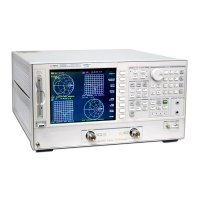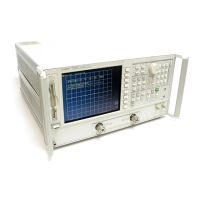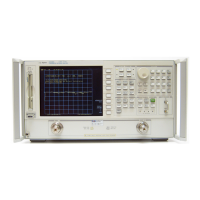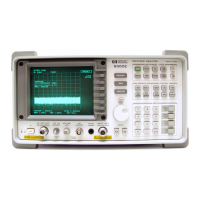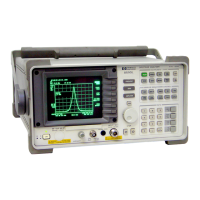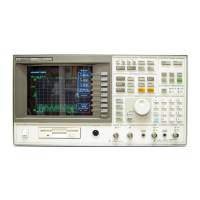5-37
Hardkey/Softkey Reference
Analyzer Functions
is used to:
1) define the lowest frequency at which a calibration kit
standard can be used during measurement calibration. In
waveguide, this must be the lower cutoff frequency of the
standard, so that the analyzer can calculate dispersive
effects correctly (see ).
or
2) set the minimum frequency of the selected frequency
band when setting up ripple test parameters.
leads to the marker search menu, which is used to search
the trace for a particular value or bandwidth.
calculates and displays the mean, standard deviation, and
peak-to-peak values of the section of the displayed trace
between the active marker and the delta reference marker.
If there is no delta reference, the statistics are calculated
for the entire trace. A convenient use of this feature is to
find the peak-to-peak value of passband ripple without
searching separately for the maximum and minimum
values.
The statistics are absolute values: the delta marker here
serves to define the span. For polar and Smith chart
formats, the statistics are calculated using the first value
of the complex pair (magnitude, real part, resistance, or
conductance).
puts a fixed reference marker at the present active marker
position, and makes the fixed marker stimulus and
response values at that position equal to zero. All
subsequent stimulus and response values of the active
marker are then read out relative to the fixed marker. The
fixed marker is shown on the display as a small triangle ∆
(delta), smaller than the inactive marker triangles. The
softkey label changes from to
and the notation “∆REF = ∆” is
displayed at the top right corner of the graticule. Marker
zero is canceled by turning delta mode off in the delta
marker menu or turning all the markers off with the
softkey.
leads to the modify cal kit menu, where a default cal kit
can be user-modified.
present a menu for color modification of display elements.
Refer to the section on adjusting the display color in the
“Using Measurement Functions” chapter of the user’s
guide for information on modifying display elements.
∆
∆
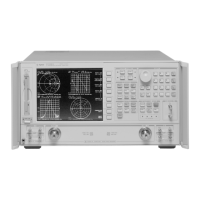
